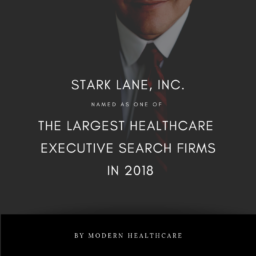
The American College of Healthcare Executives (ACHE), North Texas Chapter and East Texas Forum, hosted their 2018 Spring Education Summit on May 25th. Physician integration approaches, customer service in healthcare, executive role in IT decision and executive on boarding were the topics discussed in this all-day event. Here are 5 trends in Healthcare to watch in 2018:
1. The Importance of Having the Right People and Culture Alignment
One of the discussions was focused on understanding the challenges and disconnect between clinicians and hospitals & health systems, and the need for integration. “We are trying to rebuild this ship while we are sailing in it,” one panelist added, referring to the alignment challenges through the physician integration process with the hospital systems. During this messy transition time, healthcare leaders and clinicians must have a clear vision of the end goal, which is patient care. It is imperative for physicians and healthcare leaders to find ways to work together as this continues to be a challenge.
On one hand, there is a demand for more empathetic and humble physicians who are successful at building relationships with patients; while physicians, a group who enjoys independence, struggle to find healthcare partners who offer transparency and good communication. “If physicians are paid by production, then they will keep servicing as a production environment. The happiest physicians are the ones who don’t have to deal with production and can focus on high-quality patient care,” another panelist added. As part of the solution, compensation models are being evaluated.
Additionally, there is a need for communication improvement including data-driven metrics. “Physicians are evidence-driven; show me how your systems will make my job easier in order to take better care of my passion which is serving patient,” added one of the physicians on the panel.
It all starts with hiring the right people and joining a company who emulates one’s values. Hire people who have the heart for the patients. When choosing a healthcare leader, ensure the individual is prepared to overcome these challenges in order to get people working together and push the needle forward.
2. Happy Employees Make Happy Patients
The second panel was focused on customer service and understanding the patients’ definition of quality care. What does quality care mean to each patient? Although everyone will have a different definition, healthcare organizations should strive to exceed expectations. Patients want quality care, in a timely fashion, they want to be charged correctly, they want to feel safe, trustworthiness, they want to be greeted and spoken in a certain manner, they want caregivers who listen, and they want to know they will receive care regardless of their insurance status.
As a healthcare organization, you may be asking: what can we realistically provide to the patients? Start with employee engagement. Create trust and respect by leading by example, stay humble, acknowledge accomplishments, and reward those who provide exceptional service. Think servant leadership. Address your team by name and ‘walk the talk.’ It is important to give great customer service to the staff in order for them to give great customer service to the patients. It’s a cycle.
Proper, transparent, and open communication is key. Have the important conversations face-to-face and use email as a follow-up, not as the primary communication vehicle. One of the panelists uses whiteboards to communicate internally in her clinics. The information on the whiteboard includes the plan for the day, number of patients for the day, the names of those in staff, and her location throughout the day while she is out on meetings; this way her staff can always find her. Another panelist uses whiteboards in an acute care environment to involve the patient and the family. They include the treatment, the tests, and what to expect. Survey your employees in order to find out what they need to help serve the people who are coming into your facility.
Finally, share book suggestions with your leadership team. Some of the books highlighted were: The Southwest Airlines Way by Jody Hoffer, Raving Fans by Ken Blanchard, Good to Great by James Collins, and Patients Come Second by Paul Spiegelman and Britt Berret.
Sherri Gould added, “If you have happy people working for you, it will spread like wildfire. The patients and the families will feel engaged. It promotes trust. When everyone is getting along, they will feel better about being there because the staff is communicating with them and with each other. Employee engagement will snowball into patient satisfaction.”
3. Use Behavioral Interviews in the Hiring Process
How do you know if you are hiring the person or the ‘representative’? The ‘representative’ is the candidate who performs well in the interview, but he/she doesn’t perform well on the job. This was a hot topic of conversation. A solution? Use behavioral questions. Remember, you can train skills but not the heart. Also, involve your top performers in the interviewing process. It is beneficial for both the candidate and the team to have this time together and get different perspectives.
While discussing the executive role in IT decision, one of the panelists highlighted the importance of having the right people, on the right project, early on. As a hiring manager, you must carefully pick your team. Get people involved in the project who are respected leaders by the people on the team. People tend to learn more and be more comfortable asking questions when they have a mentorship relationship.
4. Technology and Information in Healthcare: from CIO to CEO
Within 75-80 days you can expect relevant clinical information to surface. This is a big change from the old days when it would take years for new clinically relevant information to be available. It is not ‘news’ we are in an age of information overload, but this creates special challenges in the Healthcare field.
One of these challenges is aligning people without getting distracted and aligning people to focus on the mission. Do your homework and make sure you have the right vendors and the right partners. The panelists asked to pay close attention to the cost of technology issues. The saying ‘penny wise, pound foolish’ applies here. Leverage technology to the fullest. New patient portals offer preventative alerts, partner with the media, learn social media, and how to get your message out.
Disruption is another hot topic presenting threats and opportunities. With cybersecurity as the main concern and the cloud on the rise, there is a lot of uncertainty and risk. Other disruptors include Uber Health, partnerships such as Fitbit and Google, Apple and the EHR business, Berkshire Hathaway, Amazon and JPMorgan, and AI working with clinicians to reduce the knowledge gap.
Given the criticality of the information aspect in healthcare, panelists said they would not be surprised to see more Chief Information Officers (CIO) transitioning to CEO roles. They also see a shortage of IT people with a healthcare background who are at the mid compensation level, but not so much at the higher level. They suggest being prepared to maybe pay a little more and get better people.
5. Don’t Underestimate the Power of Proper Executive Onboarding
How is executive onboarding different from other onboardings? Why do some executives succeed, and others don’t? The answer is cultural integration. There is a misconception the CEO knows everything, and although the job of the CEO is to be in tune with the organization they are leading, proper executive onboarding is paramount for his or her success. Regardless if you are bringing in an external CEO or promoting from within, they will need direction. Some board members may think they are hiring this smart person and they can come and fix it all without help. If you are part of this group, think again.
Involve your HR team and have them assist with the onboarding. Disenchantment happens when there is disorganization in the onboarding process. Ensure the new hire’s office is ready, business cards are printed, include a sheet with passwords, etc. Through the process, get to know the executive as a person, not just as the executive. Build a relationship if you want him/her to succeed. It is a two-way street. Ensure you break down the walls and, ultimately, if not given, the CEO should ask for this support.
Studies have found, on average, 40%-50% of executives fail within the first 18 months. Ensuring alignment and providing adequate onboarding will prevent your company from being another statistic.
Healthcare continues to be a complex industry with complex challenges, but at the end of the day, it’s all about the people. What good is to have the best surgeon, RN, CEO, CFO, etc. if they don’t work well together? A winning team is carefully selected and properly aligned. In healthcare, you cannot afford to hire C, D, F players. You need A+, A and B players who have a heart for the patients. Meet the needs of your patients by creating the right culture. Lean on trusted partners to help fill the knowledge gap and help you navigate through the uncertainty and the overwhelming amount of information.
Among the panelists were:
- Patricia Boeckmann RN, MHA, FACHE, Chief Operating Officer at Titus County Medical Center and former COO for Straub Medical Center in Honolulu, Hawaii.
- Michael R. Hicks, MD, MBA, MHCM, FACHE, Executive Vice President for Health System Partnerships & Clinical Affairs at the University of North Texas Health Science Center, National Medical Director for HCA Ambulatory Surgery Division, attending Anesthesiologist at US Anesthesia Partners and former CEO of EmCare Anesthesia Services.
- Erick Koch, FACHE, CFO at Tyler Family Circle of Care and former CFO at Roberson Health Care Corporation.
- Donald Taylor, Director of Southwestern Health Resources Integration at UT Southwestern Medical Center.
- Roger Fowler, MD, FAAFP.
- George T. Roberts, Jr., FACHE, CEO at North Texas Public Health District.
- Timothy J. Pugsley, MBA, CPHIMS, CHCIO, FACHE, Chief Information Officer at Titus Regional Medical Center.
- Sherri L. Gould, RN, BSN, Executive Practice Manager – Pediatrics at Tyler Family Circle of Care FQHC.
- Thomas Cutler, FACHE, MBA, RN, Senior Manager Information Resources at UT Southwestern Medical Center.
- Jennifer Blake, Glenwood Site Executive Practice Manager at Tyler Family Circle of Care
- Jennifer L. Beal Vice President Physician Integration and Shared Services at CHRISTUS Clinical Management Services.
- Joshua Liggin, Director, UT Southwestern Clinically Affiliated Physicians.
- David Helfer, FACHE, CMPE, MS, BA, R-CVT, EMT, President at Texas Institute for Surgery at Texas Health Presbyterian Dallas Hospital.
By: Rudbekia Bach
Stark Lane, Inc. is one of the most influential Executive Search Firms within the American Healthcare market. With a search focus spanning from Private Equity to the top US News and World Report Health Systems, and a reach that touches all 50 states and American joint ventures abroad. Whether your organization is searching for industry-leading talent or you are considering a career change, Stark Lane can help.
Learn more by visiting our website www.starklane.com or click here to search careers and apply online.
Questions? Call (469)208-8776 or email us at rb***@*******ne.com.








